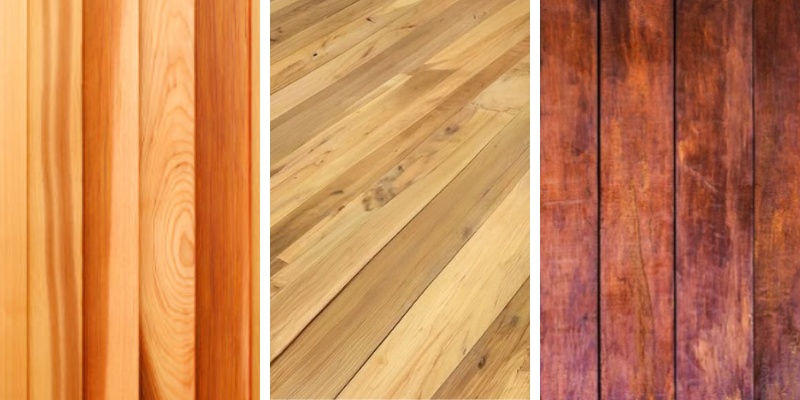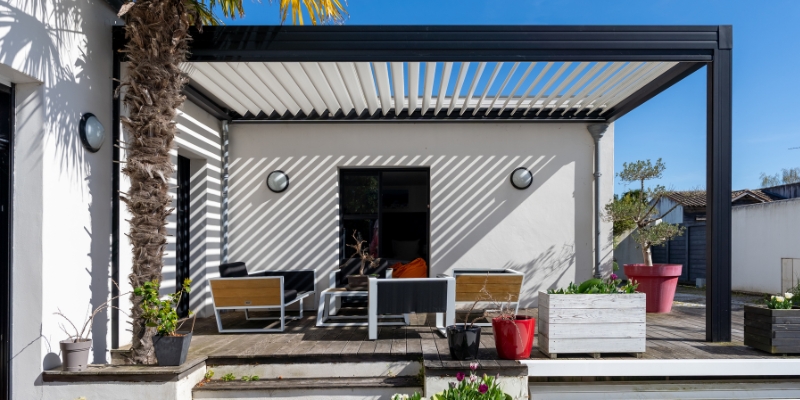
When it comes to enhancing your outdoor space, building a pergola stands out as a popular choice. Not only does a pergola add a touch of natural beauty to your outdoor space, but it also provides a functional structure for different activities.
However, the key to a successful outdoor wooden pergola project lies in choosing the right wood.
Selecting the best wood to build a pergola is crucial for ensuring durability, aesthetic appeal, and overall satisfaction with your new pergola. With options ranging from the rustic charm of western red cedar to the robust resilience of pressure-treated pine, the decision can be overwhelming.
Each type of wood brings its unique properties.
In this comprehensive guide, we dive into the world of wood pergolas, exploring various wood options and their suitability for outdoor structures.
Whether you’re considering a DIY pergola kit or planning a custom-built structure, understanding the differences in wood types is essential.
What’s The Best Wood To Build a Pergola?
According to many user’s experience, the best wood for building a pergola is cedar, primarily due to its natural resistance to rot, decay, and insect infestations.
Cedar is also highly durable and maintains its shape in various weather conditions, making it ideal for outdoor structures. Additionally, it has a distinct, pleasant aroma and a beautiful natural grain that enhances the aesthetic appeal of the pergola.
Anyway, let’s equip you with the knowledge to make an informed wood choice, ensuring that you will know all possible options.
Understanding Pergola Wood Options

Embarking on the journey to build a pergola in your outdoor space, the first step is to familiarize yourself with the various wood options available.
The choice of wood not only influences the pergola’s durability and maintenance needs but also its aesthetic appeal and how it harmonizes with your garden or patio.
Common Types of Wood Used for Pergolas
- Western Red Cedar: Western Red Cedar is called the best pergola timber for its beauty and durability. Rich natural texture and warm tones make this wood type ideal for outdoor spaces. Cedar is used for outdoor constructions because wood resists decay, rot, and insects. Its inherent oils make it weatherproof and low-maintenance. Cedar matures gently, acquiring a silvery grey patina many like.
- Pressure-Treated Pine: For those seeking a more cost-effective yet durable option, pressure-treated pine stands as an excellent choice. This wood undergoes a chemical treatment process, enhancing its resistance to decay, insects, and harsh weather conditions. Pressure-treated pine is a versatile and affordable option for pergola construction, making it accessible for a wide range of budgets. While it may not boast the same natural beauty as cedar, it can be stained or painted to achieve a desired look, fitting seamlessly into your outdoor project’s aesthetic.
- Redwood: Redwood is another popular choice for wood pergolas, prized for its beautiful color and natural durability. Like cedar, redwood is naturally resistant to rot and insects, making it a reliable choice for outdoor structures. Its rich, vibrant hues provide a stunning natural aesthetic that requires minimal maintenance to retain. Redwood’s ability to withstand humid climates and resist warping or shrinking makes it a long-lasting, durable option for pergolas.
Main Pros and Cons of Each Wood Type
When choosing the best wood for a pergola, it’s crucial to weigh the advantages and disadvantages of each option.
This wood comparison guide will help you understand the strengths and weaknesses of Cedar, Pressure-Treated Pine, and Redwood, aiding in making an informed decision for your outdoor structure.
Western Red Cedar Pros and Cons
| Pros: | Cons: |
| Aesthetic Appeal | Cost |
| Durability | Maintenance |
| Natural Oils |
- Cedar’s natural beauty, with its rich grain and warm tones, enhances the visual appeal of any outdoor space.
- Naturally resistant to decay, rot, and insect infestation, cedar pergolas can withstand harsh elements, ensuring a long lifespan with regular maintenance.
- These oils provide inherent protection against moisture and extreme weather, reducing the need for frequent treatments.
—
- Cedar is often more expensive than other wood options, which might be a consideration for budget-conscious projects.
- To preserve its beautiful color, cedar may require periodic staining or sealing.
Pressure-Treated Pine Pros and Cons
| Pros: | Cons: |
| Affordability | Chemical Treatment |
| Durability | Aesthetics |
- This is a more budget-friendly option, making it accessible for a wider range of projects.
- The pressure treatment process makes the pine resistant to decay, rot, and insects, suitable for various weather conditions.
—
- Some may have concerns about the chemicals used in the treatment process, especially in environmentally sensitive areas.
- While functional, pressure-treated pine lacks the natural beauty of cedar or redwood and may require additional staining or painting.
Redwood Pros and Cons
| Pros: | Cons: |
| Natural Durability | Chemical Treatment |
| Visual Appeal: | Aesthetics |
- Like cedar, redwood is naturally resistant to decay, insects, and moisture, making it a robust choice for outdoor pergolas.
- Its rich, vibrant color and natural grain make redwood a popular choice for those seeking aesthetic elegance.
—
- Redwood can be more expensive than other options, potentially impacting budget considerations.
- Depending on your location, redwood may not be as readily available as other wood types, affecting sourcing and cost.
Note: By understanding these pros and cons, you can better assess which type of wood aligns with your needs for an outdoor pergola.
Factors Influencing Wood Choice for Pergolas
Choosing the best wood for your pergola involves considering various factors that impact its performance and suitability for your outdoor space.
Here are key considerations that should guide your decision-making process:
1. Maintenance and Longevity
- Regular Maintenance Needs: Some woods, like cedar and redwood, require regular maintenance such as staining or sealing to maintain their beautiful color and natural grain. Pressure-treated wood, while less demanding in maintenance, may not offer the same aesthetic appeal.
- Longevity of Different Woods: The lifespan of your pergola greatly depends on the wood choice. Tropical hardwoods and pressure-treated lumber are known for their long lifespans, making them an excellent choice for a durable outdoor structure.
2. Aesthetic and Design Preferences
- Matching Wood to Outdoor Decor: The wood you choose should complement the overall aesthetic of your outdoor space. Cedar, with its natural beauty, can enhance more traditional or rustic designs, while pressure-treated wood offers a blank canvas for more customized paint or stain choices.
- Staining and Finishing Options: Consider the ease of staining and finishing each wood type. Woods like cedar and redwood have a natural beauty that requires minimal intervention, while pressure-treated lumber may need more attention to achieve a specific look.
3. Consider Your Climate
If you live in an area with extreme weather conditions or high humidity, woods like pressure-treated lumber or tropical hardwoods, known for their resistance to such elements, might be the best choice. Their ability to withstand harsh weather conditions ensures your pergola remains structurally sound and aesthetically pleasing for years.
4. Budget Constraints
It’s essential to balance your desires with your budget. While cedar and redwood offer natural beauty and durability, they come at a higher cost. Pressure-treated pine, on the other hand, offers a more affordable option while still providing durability.
All in All
Selecting the best wood for your pergola is a decision that blends aesthetics, durability, and budget considerations.
Whether you lean towards the natural elegance and longevity of Western Red Cedar, the cost-effectiveness and resilience of Pressure-Treated Pine, or the striking beauty and robustness of Redwood, each wood type offers unique benefits to suit your specific needs.
Consider the maintenance requirements, your local climate, and design preferences when choosing the wood type. Remember, the right wood enhances the visual appeal of your outdoor space and ensures a lasting, enjoyable outdoor experience.
Here’s the deal:
Fewer and fewer people are constructing or purchasing wooden pergolas, as you may have seen previously, right?
This is because aluminum pergolas are becoming more popular due to their affordability, ease of assembly, low maintenance requirements and usually these pre-made kits save you a bit of money.
The final decision between a wooden and an aluminum pergola should be based on the design you have in mind. But if you are looking for a new pergola, highly recommend having this on your mind.


